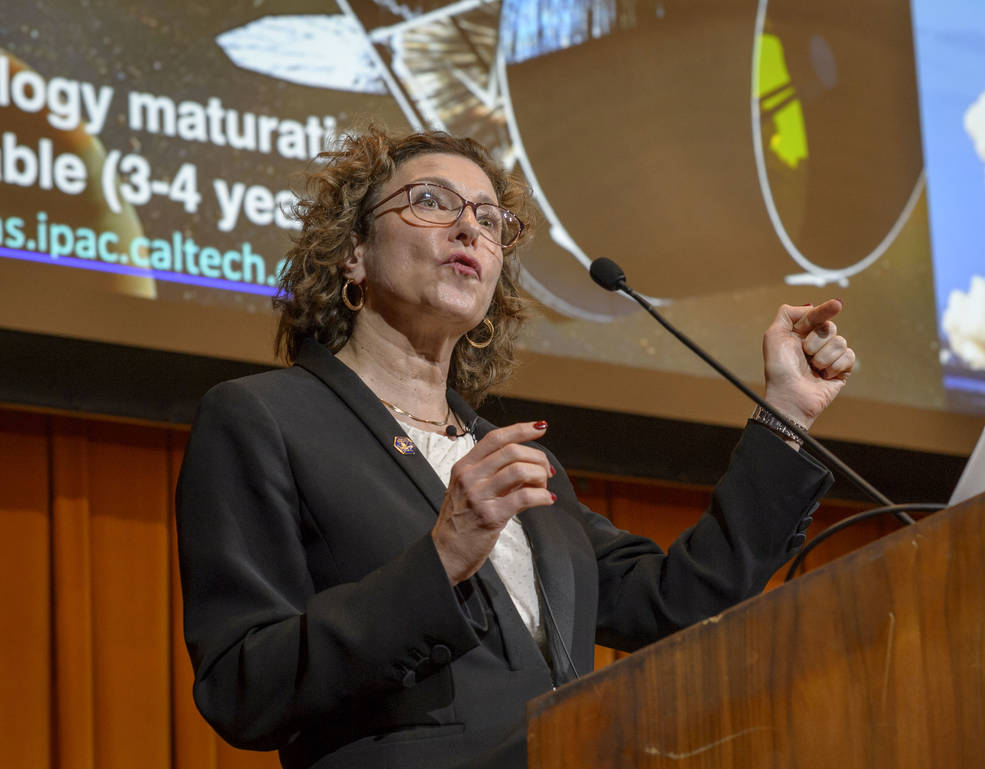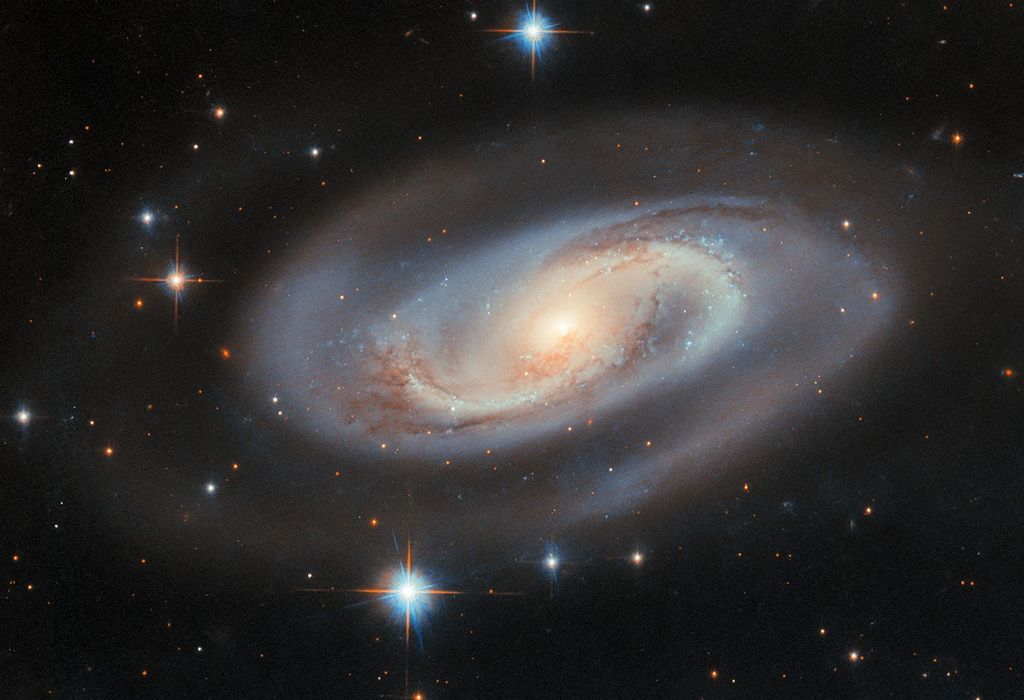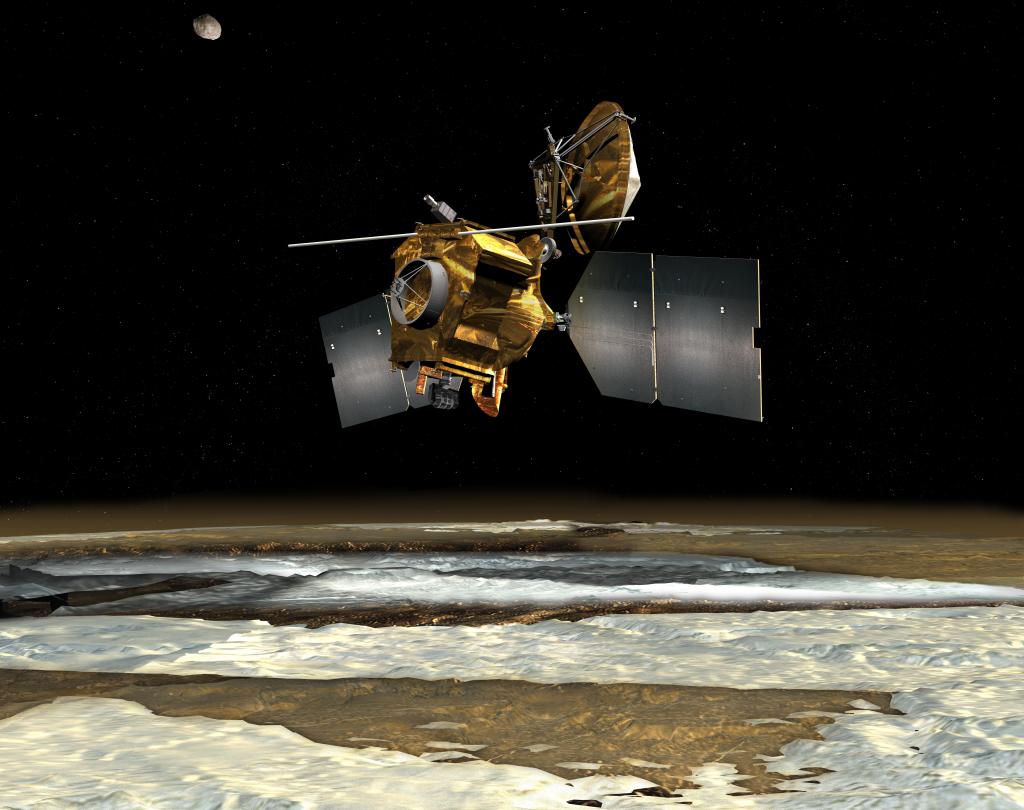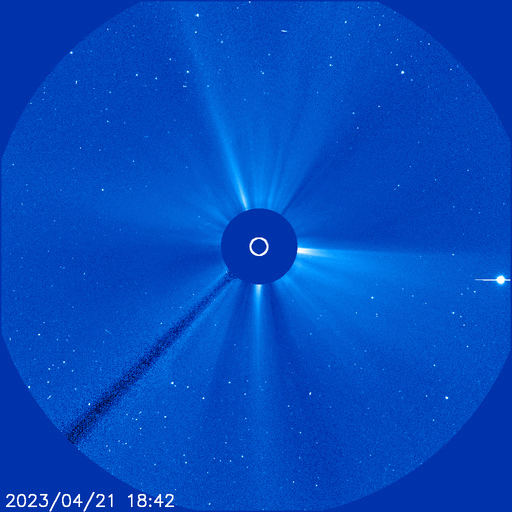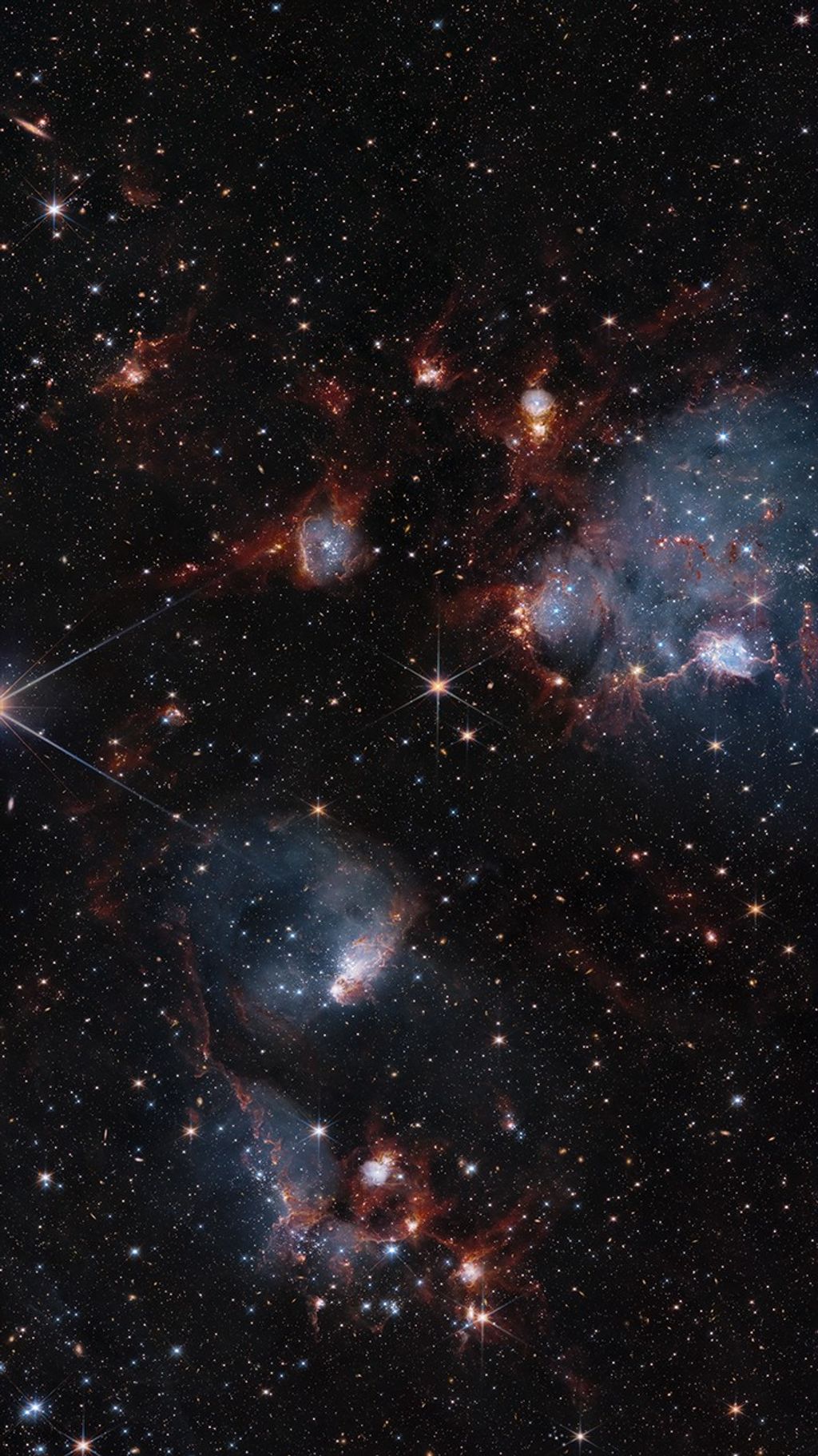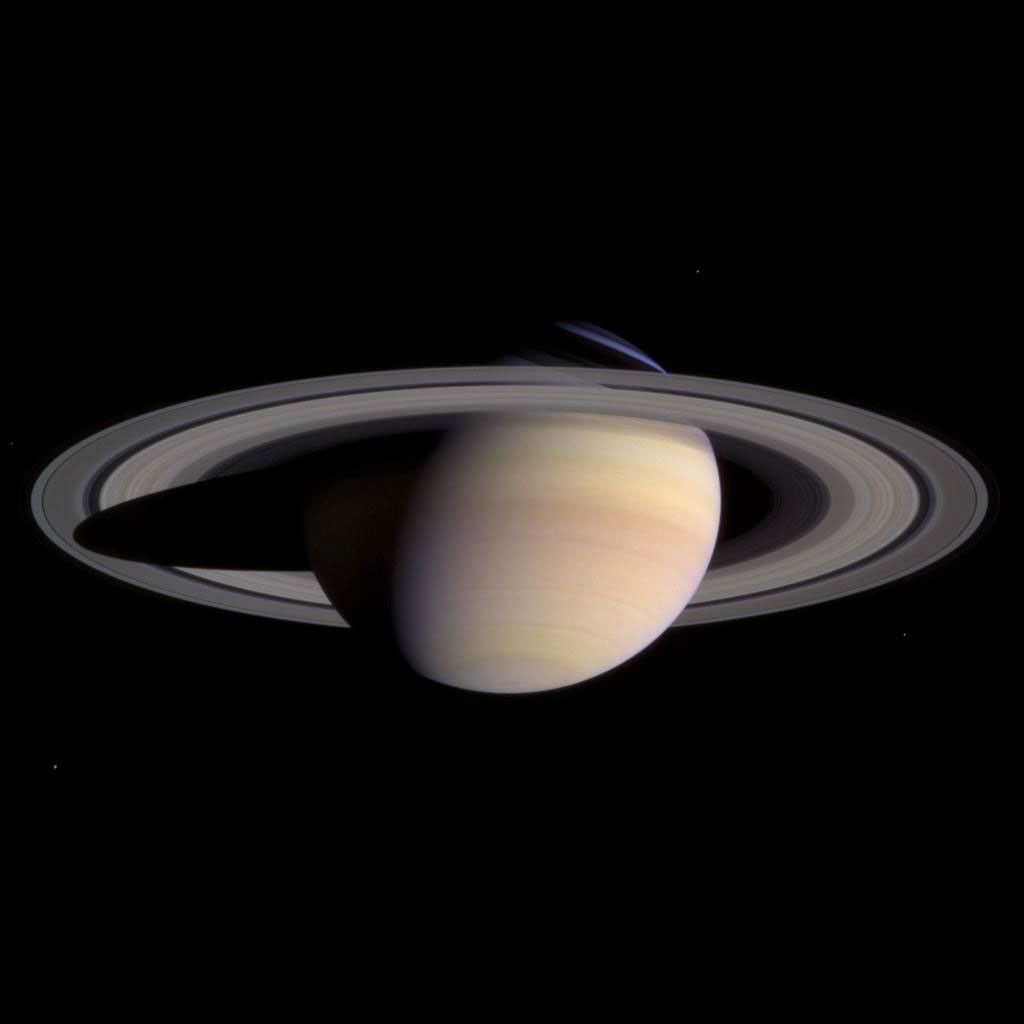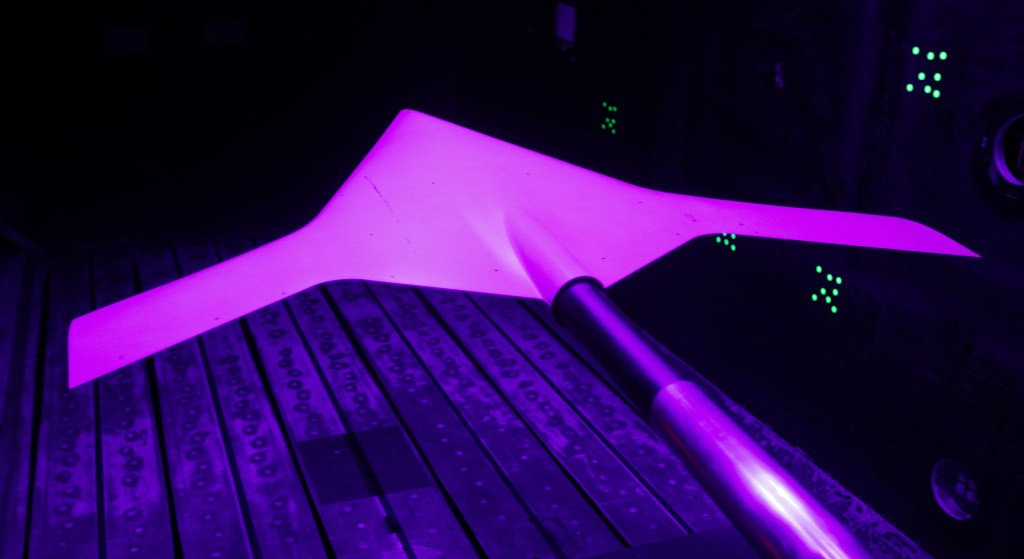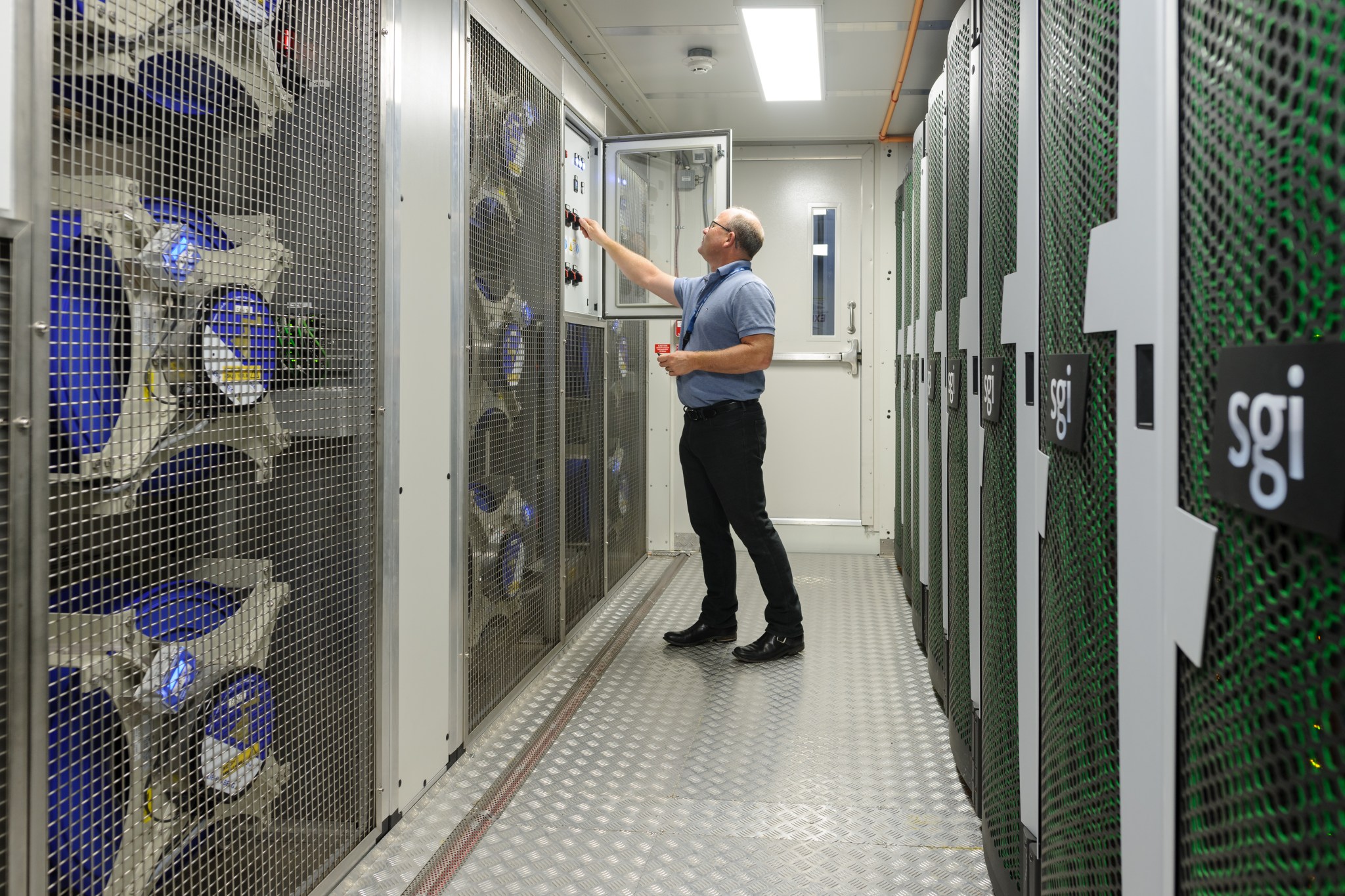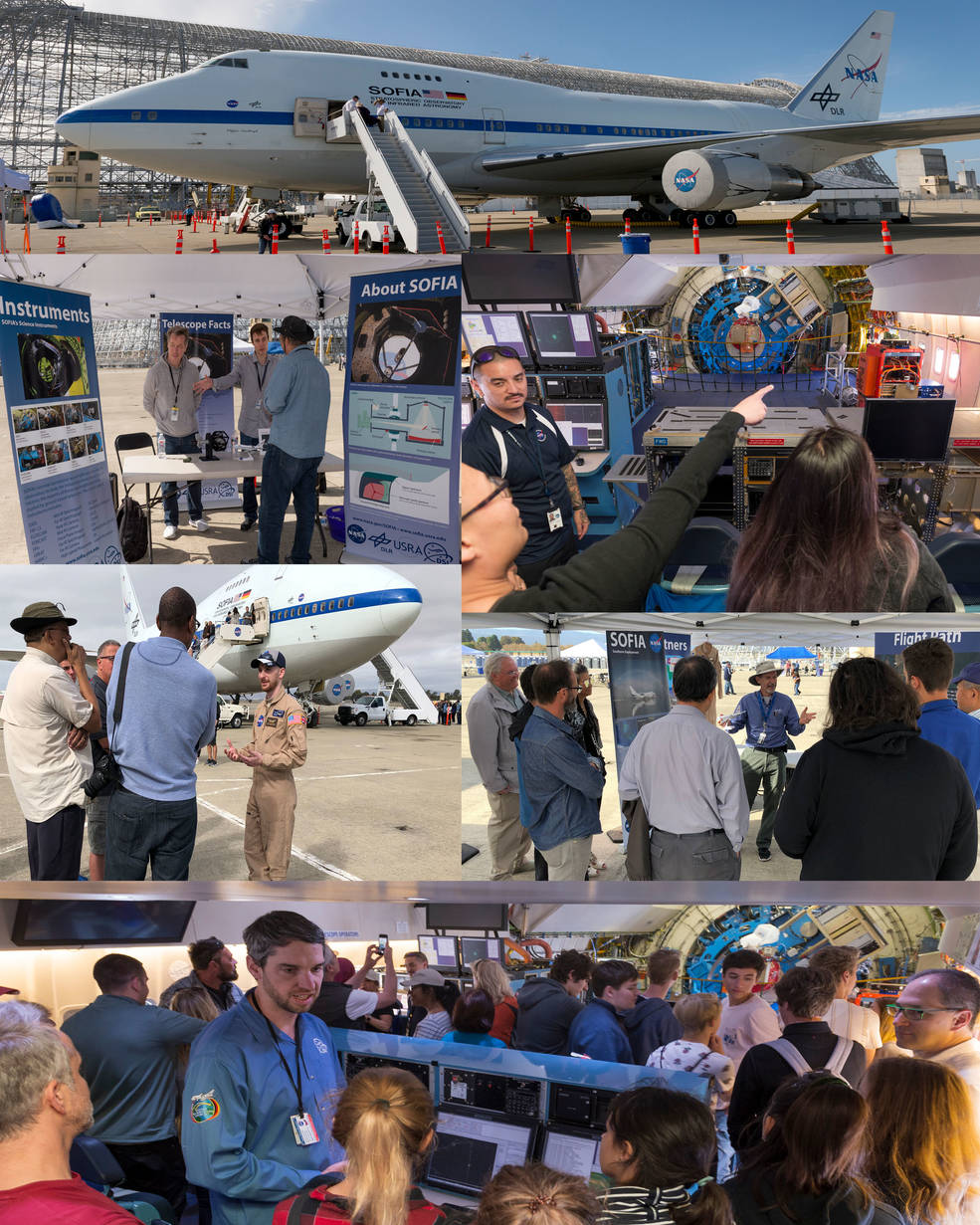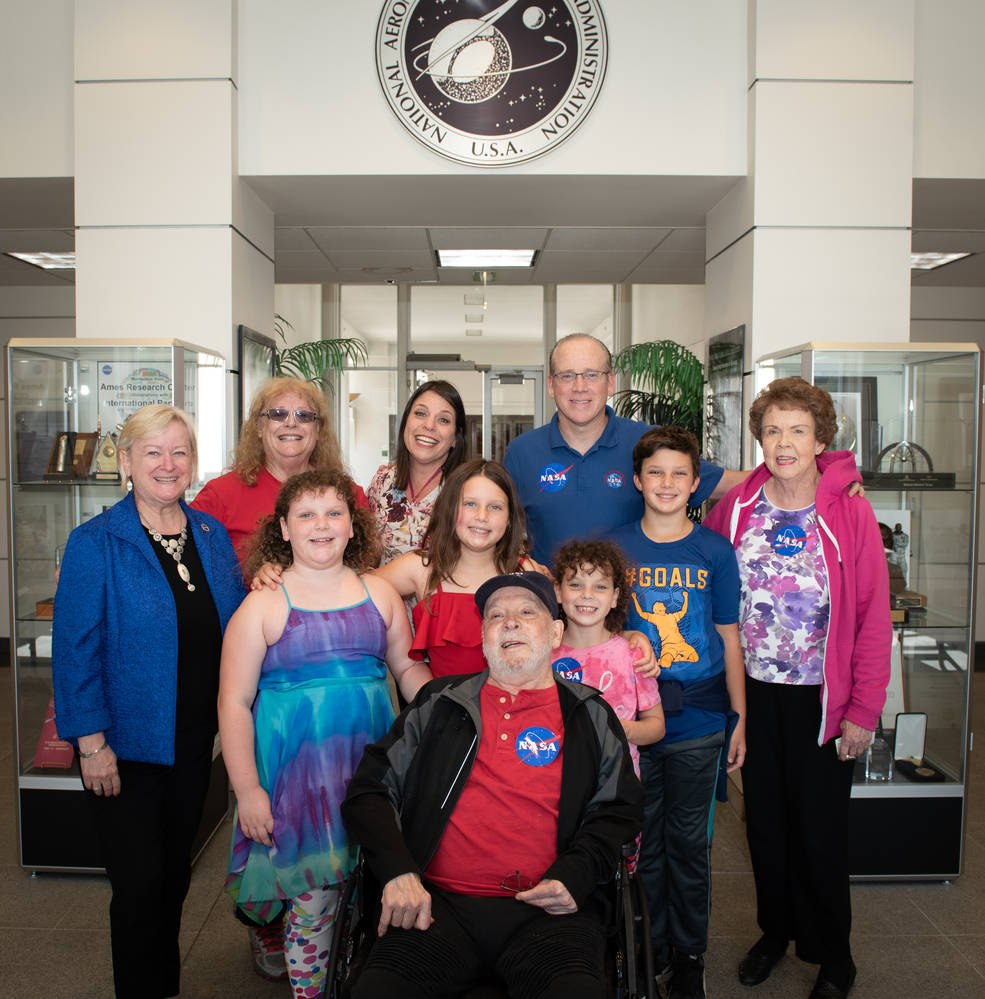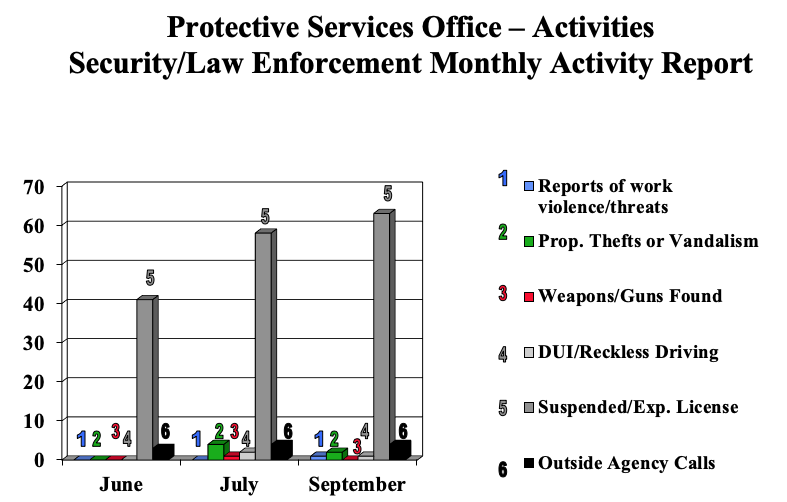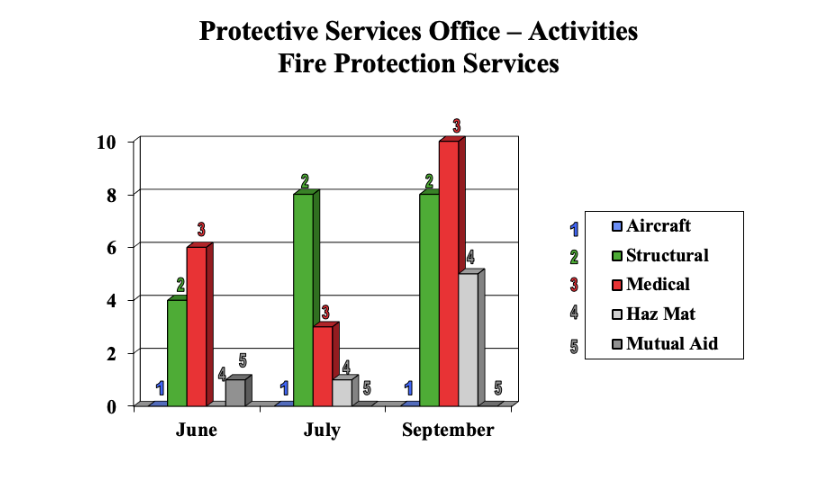October 2019 issue of Ames' newsletter, the Astrogram
New VIPER Lunar Rover to Map Water Ice on the Moon
by Alison Hawkes
NASA is sending a mobile robot to the South Pole of the Moon to get a close-up view of the location and concentration of water ice in the region and for the first time ever, actually sample the water ice at the same pole where the first woman and next man will land in 2024 under the Artemis program.
About the size of a golf cart, the Volatiles Investigating Polar Exploration Rover, or VIPER, will roam several miles, using its four science instruments — including a 1-meter drill — to sample various soil environments. Planned for delivery to the lunar surface in December 2022, VIPER will collect about 100 days of data that will be used to inform the first global water resource maps of the Moon.
“The key to living on the Moon is water – the same as here on Earth,” said Daniel Andrews, the project manager of the VIPER mission and director of engineering at NASA Ames. “Since the confirmation of lunar water-ice ten years ago, the question now is if the Moon could really contain the amount of resources we need to live off-world. This rover will help us answer the many questions we have about where the water is, and how much there is for us to use.”
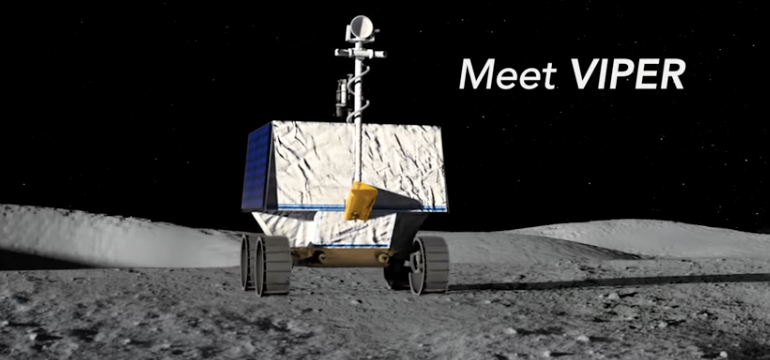
For full story, see: VIPER
NASA and Uber Test System for Future Urban Air Transport
by Abigail Tabor
A new future for city transport is in the works at NASA – a future where both people and packages will take to the air. The agency is working with partner company Uber to evaluate certain things we already know and others we still need to invent to manage this expected new air traffic. The goal, known as Urban Air Mobility, or UAM, is a safe and efficient air transportation system where everything from small package-delivery drones to passenger-carrying air taxis operate over populated areas – from small towns to the largest cities.
Researchers at NASA’s Ames and Langley Research Centers are developing technologies for UAM airspace management to make large-scale operations possible. At Ames, in California’s Silicon Valley, there’s a good foundation to build on. Researchers here have already studied, designed and tested tools and technologies that could be used in the near future to manage the airspace for small drones flying at low altitudes, even in complex urban landscapes. Called Unmanned Aircraft Systems Traffic Management, or UTM, it’s giving a leg up to the emerging world of passengers and goods traveling smoothly above our city streets.
For full story, see: UberTestSystem
Google and NASA Achieve Quantum Supremacy
by Frank Tavares
Google, in partnership with NASA and Oak Ridge National Laboratory, has demonstrated the ability to compute in seconds what would take even the largest and most advanced supercomputers thousands of years, achieving a milestone known as quantum supremacy.
“Quantum computing is still in its infancy, but this transformative achievement rockets us forward,” said Eugene Tu, center director at NASA Ames. “Our missions in the decades to come to the Moon, Mars and beyond are all fueled by innovations like this one.”
For full story, see: QuantumSupremacy
SOFIA Visit to Ames Draws Crowds Eager to Tour the Airborne Observatory
The Stratospheric Observatory for Infrared Astronomy (SOFIA) (top photo) made a rare visit to NASA Ames on Oct. 18 and 19, 2019. The observatory hosted open viewing days for Ames staff and guests, members of the local astronomy community and the general public. Visitors had a chance to speak with SOFIA staff, learn about the observatory and its science and walk through the aircraft. SOFIA is a Boeing 747SP jetliner modified to carry a 106-inch diameter telescope. It is a joint project of NASA and the German Aerospace Center, DLR. NASA Ames manages the SOFIA program, science and mission operations in cooperation with the Universities Space Research Association (USRA) and the German SOFIA Institute (DSI). The aircraft is maintained and operated from NASA Armstrong Building 703, in Palmdale, California.
Rainer Strecker (left) and Alexander Steidle (right) (both DSI) (second photo down from top, left) explain SOFIA’s telescope to a visitor at one of the information booths set up for the open viewing days. Visitors look at the interior of the SOFIA aircraft (second photo down from top, right) as well as the bulkhead (blue) that separates the telescope and its open cavity from the pressurized cabin. Also visible is one of SOFIA’s six science instruments (red) that receive and analyze the light from the telescope. Instrument Scientist Sam Richards (USRA) (third photo down from top, left) answers questions for a group of visitors. Ken Bower (USRA) (third photo down from top, right) discusses how flight planners balance the competing demands of the aircraft, air traffic control, and the movement of the stars to be able to make astronomical observations from 40,000 feet. Enrico Pfueller (DSI) (bottom photo) guides a group of high school students from the German International School of Silicon Valley through the observatory.
When Exoplanets Collide
by Nicholas Veronico
A dramatic glimpse of the aftermath of a collision between two exoplanets is giving scientists a view at what can happen when planets crash into each other. A similar event in our own solar system may have formed our Moon.
Known as BD +20 307, this double-star system is more than 300 light years from Earth with stars that are at least one billion years old. Yet this mature system has shown signs of swirling dusty debris that is not cold, as would be expected around stars of this age. Rather, the debris is warm, reinforcing that it was made relatively recently by the impact of two planet-sized bodies.

For full story, see: ExoPlanets
One Great Moon Hack, Ten Years Later: Q&A with NASA Lunar Scientist Tony Colaprete
by Abigail Tabor
A rocket’s empty fuel tank smashed into the surface of the Moon 10 years ago on Oct. 9, 2009. Meanwhile, back on Earth, Tony Colaprete was holding his breath: Would it work? As their spacecraft followed behind, would his team’s instruments detect water in the lunar soil thrown up by the impact?
Using essentially a piece of garbage to do truly groundbreaking science was the brilliant hack behind NASA’s LCROSS mission, the Lunar Crater Observation and Sensing Satellite. And, boy, did it work. LCROSS reached out and touched that Moon material and confirmed it held a considerable amount of water ice. Colaprete, who was the mission’s principal investigator, looks back on the clever solutions that defined LCROSS and the drama of the impact night. And he explains what all that water means for NASA’s Artemis program today.
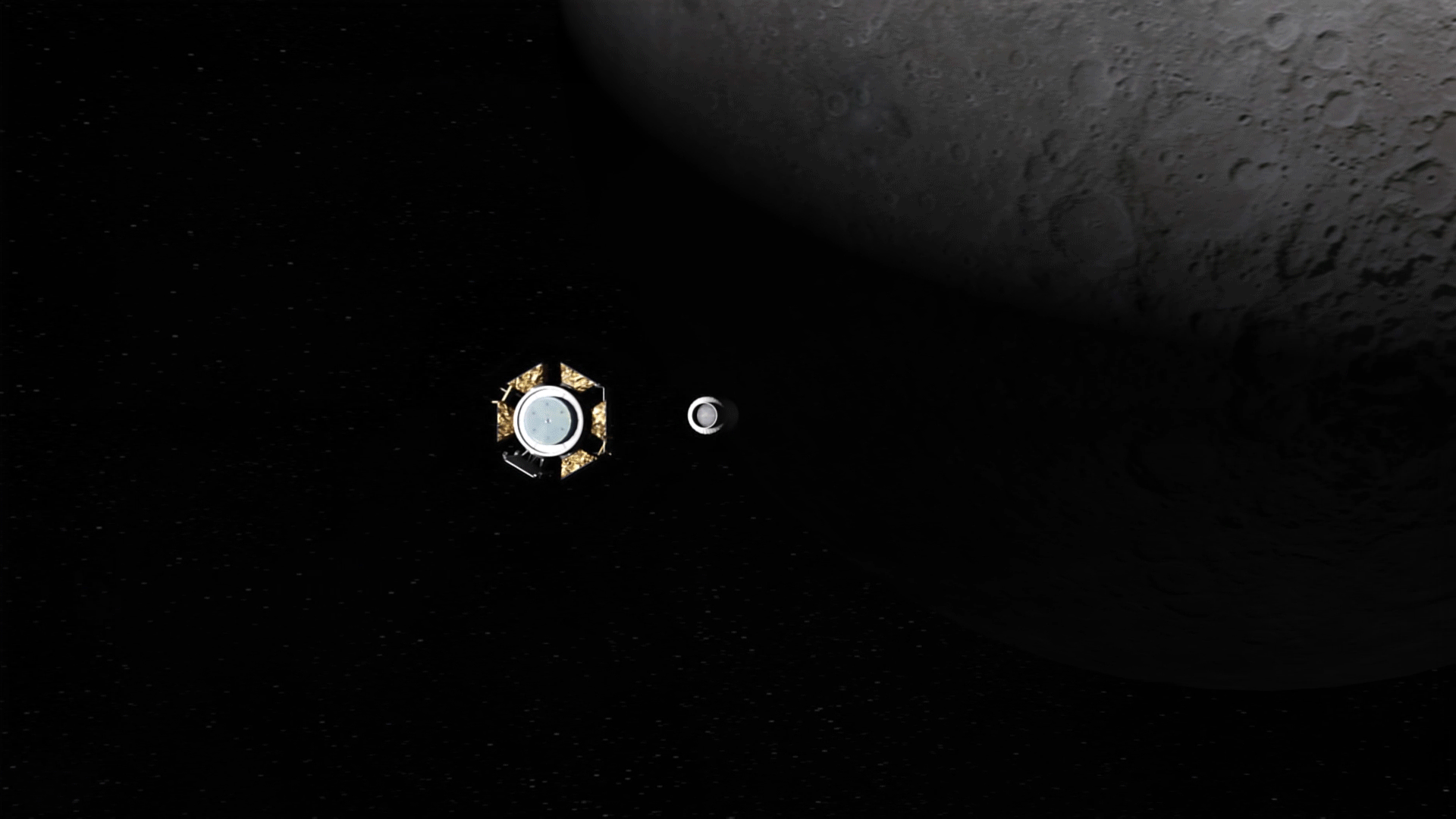
For full interview, see: TenYearsLater
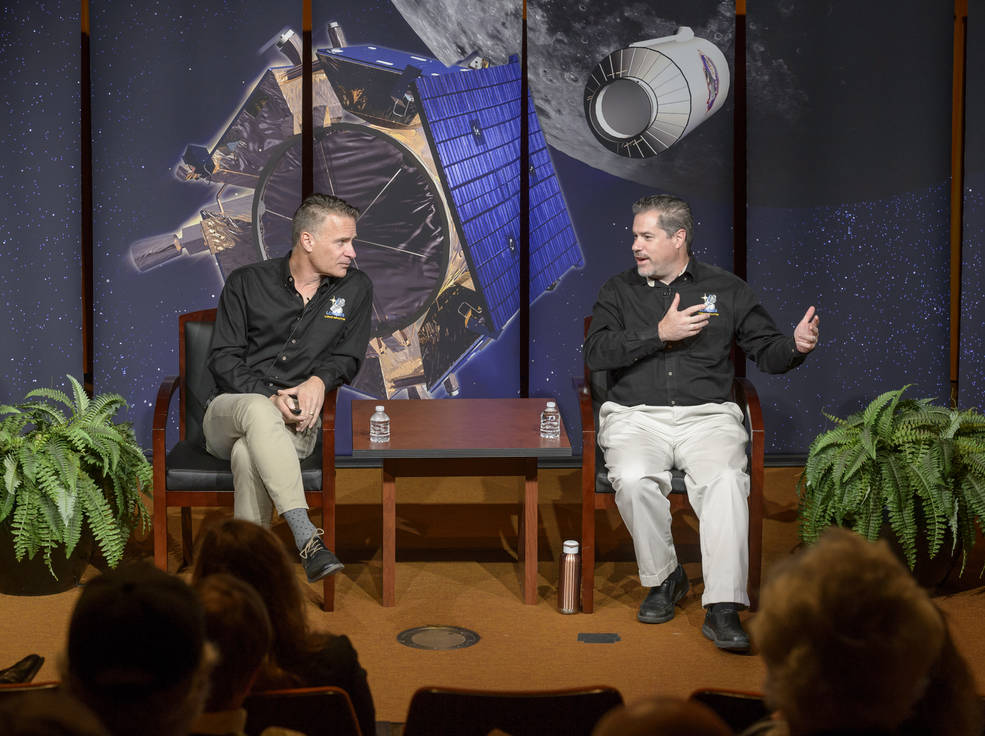
Korsmeyer Presents Plans for Ames’ Future, Encourages Employee Visionary Input
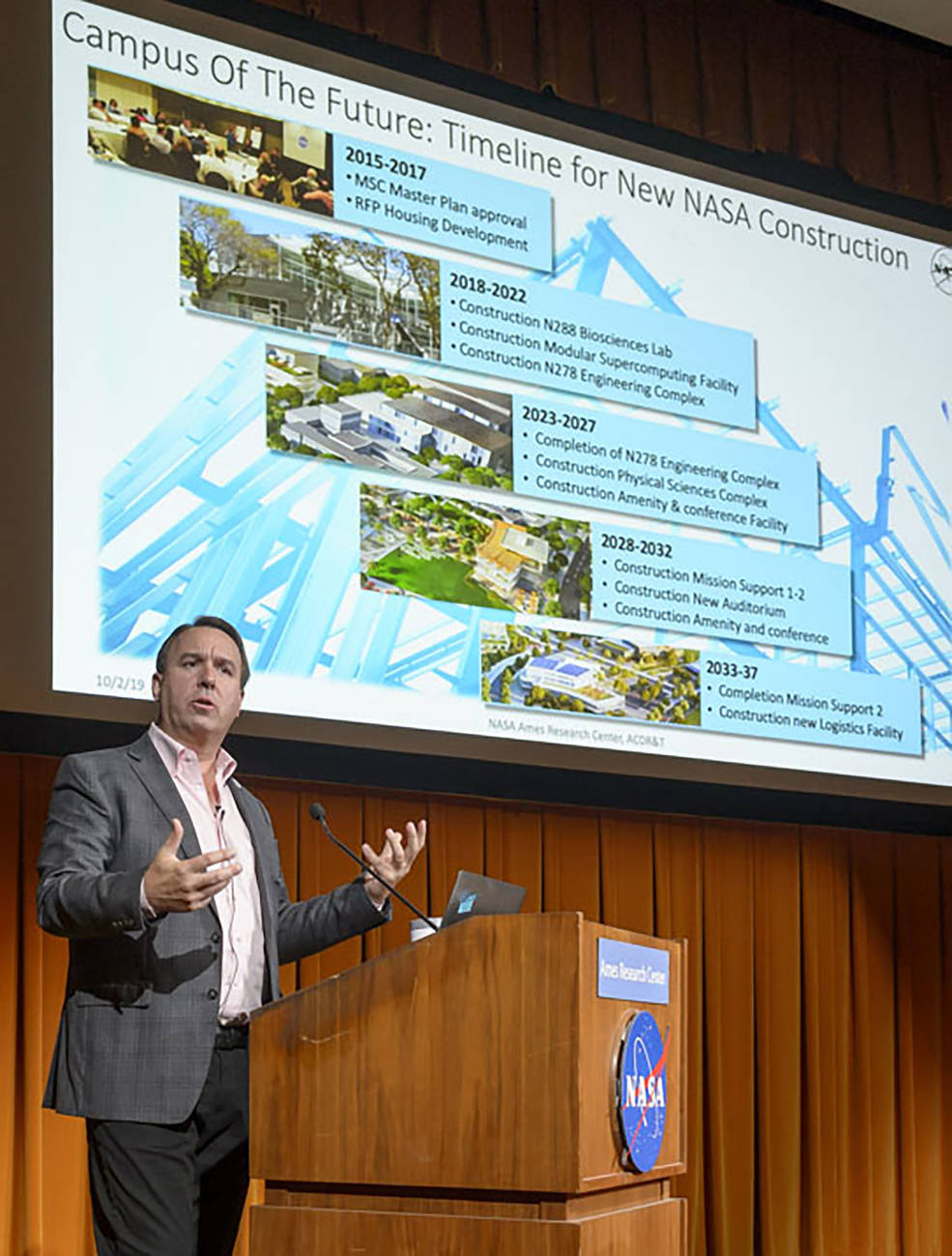
Astronaut George Zamka Speaks at Ames, Celebrating Hispanic Heritage Month
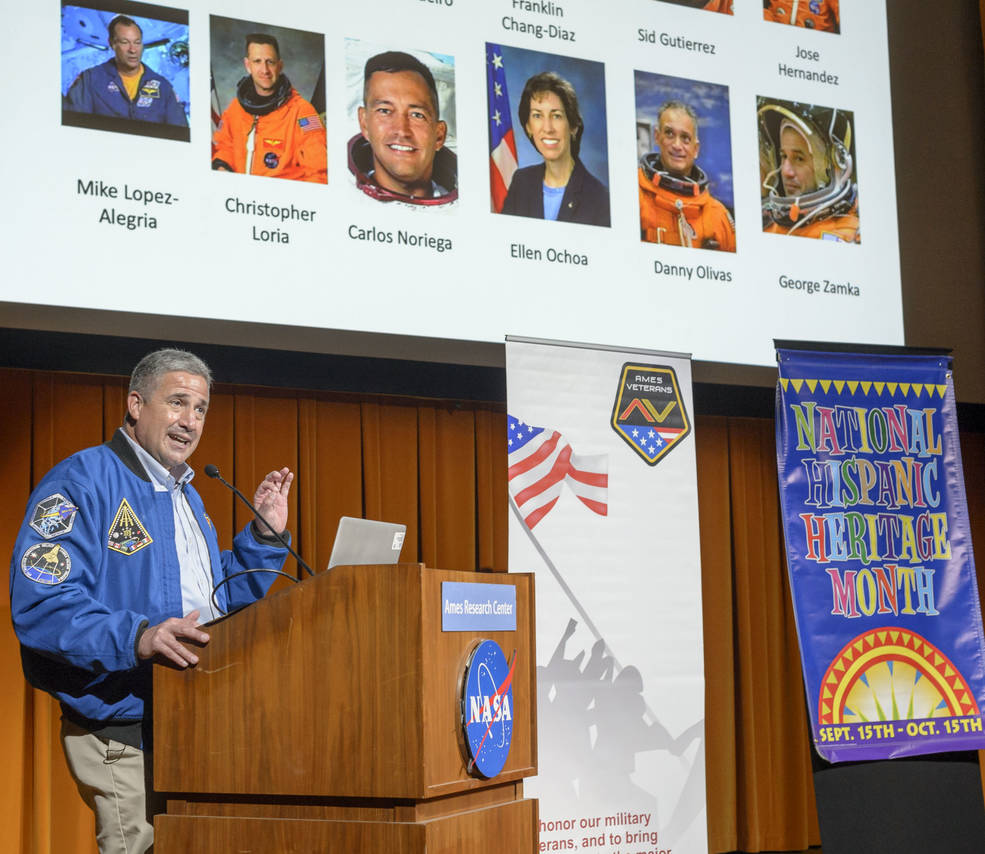
Project Manager for Pioneers 10, 11 and 12, Larry Lasher, Visits Ames
On Oct. 9, 2019, Larry Lasher and his family came to the Center to tour the Vertical Motion Simulator, Future Flight Central and National Full-Scale Aerodynamics Complex. They also met with Deputy Center Director Carol Carroll. Lasher was the project manager for Pioneer 10, which launched in March 1972 sending it’s last signal to Earth in January 2003. It traveled past the asteroid belt and took close-up images of Jupiter. Pioneer 10 made valuable scientific investigations in the outer regions of our solar system until the end of its science mission on March 31, 1997. “Originally designed for a 21-month mission, Pioneer 10 lasted more than 30 years. It was a workhorse that far exceeded its warranty, and I guess you could say we got our money’s worth,” stated Lasher back in February 2003.
Lasher was also project manager for Pioneer 11, a robotic space probe that was launched on April 6, 1973 to study the asteroid belt, the environment around Jupiter and Saturn, solar wind and cosmic rays. It was the first probe to encounter Saturn and the second to fly through the asteroid belt and by Jupiter.
In addition, Lasher worked on the Pioneer 12, the Venus Multiprobe Project. It’s main objective was to investigate the solar wind in the Venusian environment, map the planet’s surface through a radar imaging system and study the characteristics of the upper atmosphere and ionosphere. The multiprobe was launched on Aug. 8, 1978 and reached Venus on Dec. 9, 1978 and was made of five separate probes: the probe transporter (referred to as the Bus), a large atmospheric entry probe (called Sounder) and three small probes. The Sounder released from the Bus on Nov. 15, 1978. The three smaller probes released on Nov. 19, 1978. The probes sent valuable data to Earth as they descended toward the surface.
Santa Clara University History Chair Nancy Unger Presents at Ames for LGBT History Month
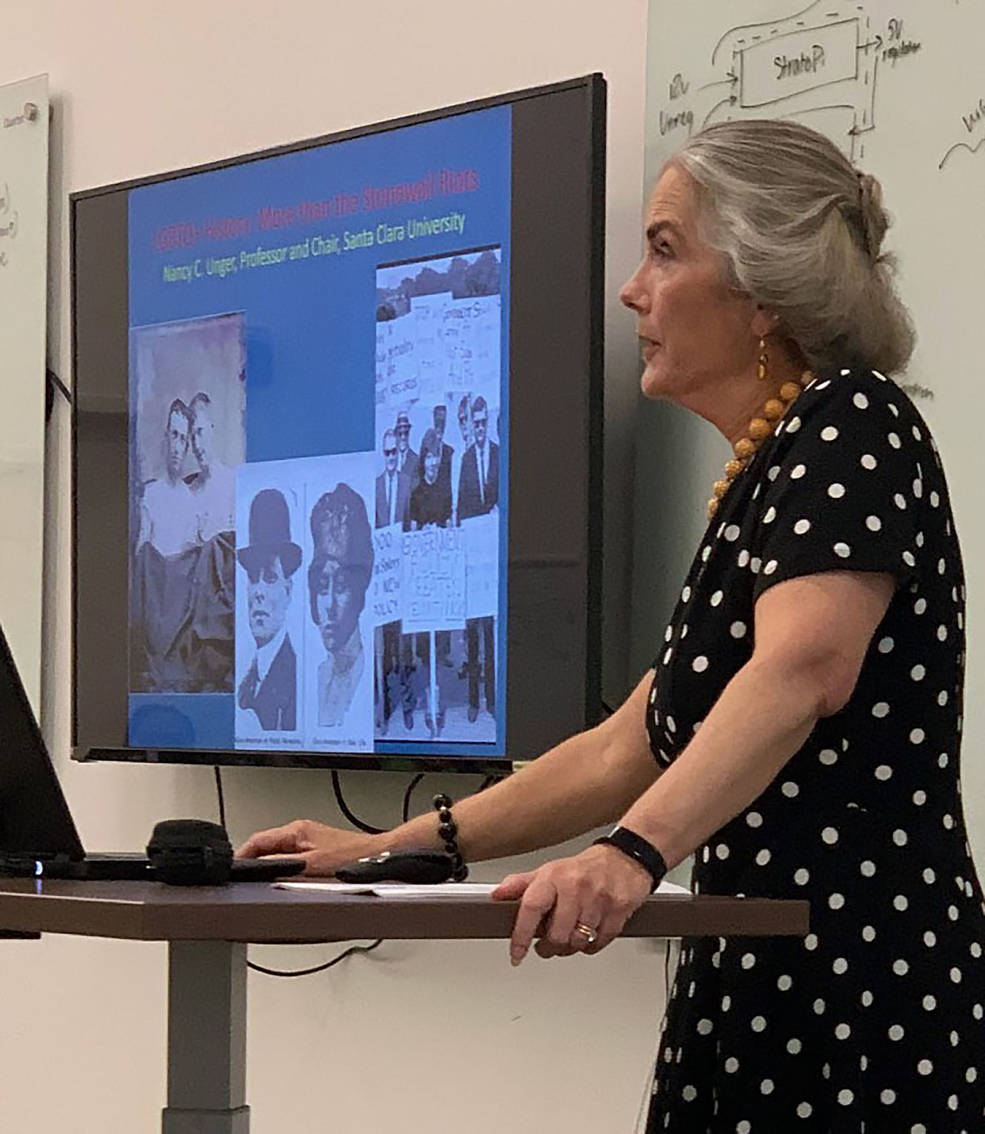
Meixner Discusses the Origins Space Telescope and the Secrets it May Uncover
